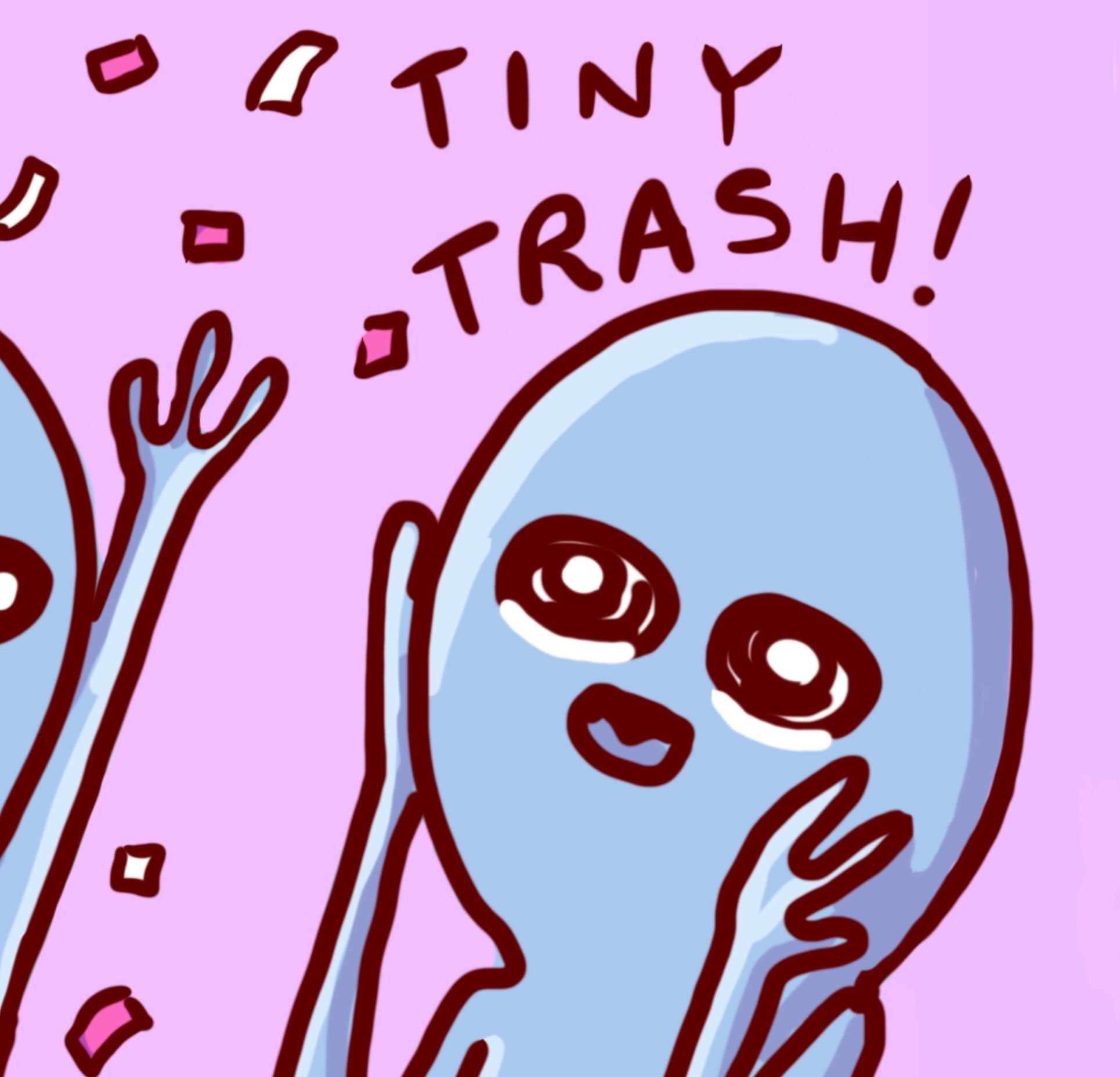One of the most frustrating things about null is that it has so many possible meanings:
- We don’t plan to provide a value here, so use a default instead
- We plan to provide a value, but memory for this value hasn’t been allocated yet
- The memory has been allocated, but we haven’t attempted to compute/retrieve the proper value yet
- We are in the process of computing/retrieving the value
- There was a code-level problem computing/retrieving the value
- We successfully got the value, and the value is “the abstract concept of nothingness”
- or the value is “please use the default”
- or the value is “please try again”
And so on. “Null” probably has more different meanings based on context than the word “fuck”.
Ooh and the edge cases. Like if your last name is Null.
Bobby Tables would be proud.
The way I use it is 'undefined' is literally undefined (not set), but null means no value - explicitly.
I used to ban
nullusages with ESLint rules for this exact reason. If it’s there use a value, if not useundefinedExcept you can define a value with undefined and accessing that value will have different behavior than attempting to access an undefined value.
It's a non-zero string tho?
Many of these meanings seem to be captured in some modern solutions already:
- We plan to provide a value, but memory for this value hasn’t been allocated yet.
- The memory has been allocated, but we haven’t attempted to compute/retrieve the proper value yet
- We are in the process of computing/retrieving the value
Futures?
- There was a code-level problem computing/retrieving the value
Exception?
Resultmonads? (Okay, yea, we try to avoid the m word, but bear with me there)- We successfully got the value, and the value is “the abstract concept of nothingness”
An
OptionorMaybemonad?- or the value is “please use the default”
- or the value is “please try again”
An enumeration of return types would seem to solve this problem. I can picture doing this in Rust.
Don't call it a monad, call it a structured data type or something, that's what it is! Calling it a monad is like saying that you're using a curve of constant normal intersection point. Why not just say it's a wheel?
Yes, it's mathematically true that you're having a smooth ride precisely because the normals have a constant intersection point, but it's also true to say that it's a wheel and it goes round and isn't bumpy and doesn't scrape, and people can get a handle on that.
So yeah, use a Result or Option or Maybe structured data type because it keeps explicit track of whether there's a value or not, and yeah, you can change or combine them and preserve the tracking, but there's no point calling it a monad unless you're trying to make people believe that avoiding the $1bn mistake of allowing/using null requires category theory. It doesn't, it's just a structured data type. It's simpler than an array! Stop calling it a monad.
Monad.
"Monad" is a shorter term though. "Structured data type" reads almost as bulky as "Curve of constant normal intersection points".
True. But the word Monad has done more harm to the accessibility, popularity and reputation of pure functional programming than pretty much anything else.
Yeah, I could have said circle rather than curve of constant normal intersection points, but that word is very commonly understood, so it's not that same as unnecessarily calling something a Monad. Maybe it's the equivalent of calling it a 2-manifold instead of a wheel.
Perhaps just ditch the generalisation, then, and just call them Result or Maybe. After all, circle is a short word, but we just call them wheels.
Yeah, for this reason null shouldn't be part of any production code. If there's the possibility of having a null value, you need to check every variable or returned value to be safe.
These monads tell the consumer of your functions to do something (a check for emptiness or wait for it to be ready, or iterate it) to access the value inside. In a safe language, if the value is not wrapped by a monad, then you should expect to access it without issues.
I kind of get why people don't want to call them monads, since it sounds like a heavy term and more things to learn that are not strictly "necessary", but the earlier you learn about their importance, the earlier you can use any of their benefits in your codebase.
Null was added to JavaScript because Java had it. Null is unnatural. Undefined is the canon "no value" value.
Null isn't unnatural, null just isn't there.
NaN: A fire extinguisher
But
typeof(fire_extinguisher) === "toilet_paper"JavaScript wat
Still to date one of more sensible JavaScript demos.
maybe it's rather a box of tissues
I need a different picture for negative values
Flip the toilet roll around.
before use and after use?
If you have 0 before use, you have a negative value after use.
You're going to need a wet suit, an oxygen tank and scuba gear for that … and some air freshener or a deodorizer.
deleted by creator
“Other alternatives” is a pleonasm, “alternatives” suffices.
We should make a linter for Lemmy. That’ll shut me up.
This is JavaScript undefined logic specifically where it means the key isn't present on the object.
Except you can add the key with an undefined value and it may have different behaviors than if the key was really not there.
Please add a trigger warning to this in the future, this is too scary
In JS a Boolean has 4 states.
true
false
undefined (where the key is set to undefined)
undefined (where the key doesn't exist on the object)if (obj.value === true) { console.log(1); } else if (obj.value === false) { console.log(2); } else if ("value" in obj) { // key "value" is in the obj, but it is set to undefined console.log(3); } else { // key "value" is not in object console.log(4); }You're welcome.
deleted by creator
Oh oh oh now do infinity, -infinity, -0, and NaN.
NaN would be something that isn't toilet paper. So I'm gonna say a picture of a whole rotisserie chicken on the toilet paper bar.
deleted by creator
I thought it was established that in the context of this meme and the comment above mine, numbers were represented by toilet paper as an analogy. If that's not the case, then I don't get the meme at all.
It gets funner when it's a value that actually is a complex number with an "imaginary" component, but gets represented by NaN because the real value doesn't make sense by itself. In reality, imaginary components are extremely critical for some equations and are totally valid.
I wish I remembered my math well enough to have one off the top of my head, but I don't use it often enough… IIRC, it's even important for magnetics, let alone more complex physics, so it does come up in practice quite often. I think there's even a fundamental part related to derivatives, but yea, don't exercise math enough. Might be misremembering.
Infinities: The toilet paper just keeps piling up until it's out of frame. It probably ends somewhere, but nowhere we can measure.
Alternately, the toilet paper it tightly wedged in the little hole and no more could be accommodated.
Subnormals: There's less than one square left, but there is still toilet paper.
-0: The glue marks on the empty tube are pointing the other way. This shouldn't matter, but is apparently enough to confuse some toilet users.
NaN, NaN, NaN, NaN, NaN, NaN, NaN and NaN
Who the fuck puts captions ABOVE a picture???
Get the tar…
The worst thing is that the text and images are misaligned.
Ease up mate CSS isn’t easy
This image reminds me of a junior dev who used fixed position for everything because he "couldn't make it look like the picture otherwise".
Javascript, regarding zero, null and undefined =
They're all the same thingThat's not true these days. You can try it yourself right in your browser's dev console.
These results are from Firefox's console.
0 == null == undefined > false 0 == null > false 0 == undefined > false null == undefined > true null === undefined > falseAnd even in the one case where
==says they are the same, you can fix that by making sure you are using===so that it doesn't do type coercion for the comparison.Shhhhh, bashing Javascript is cool around here.
Just make fun of it for having two flavors of null.
So what's wrong with having two flavors of null?
It's super confusing. A lot of people think even one null is a problem.
What's confusing about that? It's null, just two different kinds with slightly different meanings. Is having two boolean values also confusing?! Should we simplify it?
I mean I can get behind trying to remove null entirely and replacing it with better concepts, but I cannot understand why having one more null value suddenly makes it confusing. You don't even have to care in 95% of the cases, and it can be useful in the other 5%.
Honestly, it looks more like some kind of misguided purism to me.
Why stop at two? Why not have a dozen versions of null?
Oh man, you've got me itching to get into the intricacies of JavaScript…
One fun example of the difference: when doing arithmetic operations,
nullis indeed converted to 0, butundefinedis converted to NaN. This has to do withnullbeing an assigned value that represents empty, whereasundefinedis not actually a value but a response indicating that there was no value assigned in the first place.response indicating that there was no value assigned in the first place.
You can explicitly assign undefined to a variable though.
Another fun fact about JavaScript is that
undefinednever used to be a keyword. If you didvar foo = undefined,foowould indeed have a value ofundefined, but it was only because there was no variable calledundefinedin scope!You could do
var undefined = 42thenvar foo = undefinedwould actually setfooto42!window.undefined = 42would break all sorts of things.Thankfully this was fixed with ES5 in 2009, although it took a few years for browsers to make the change.
javascript moment
Reminds me of this trifecta.
Isn't the undefined one incorrect? From what I know undefined means it can contain whatever value. So it could be no toilet paper, full toilet paper or anything in-between.
not undefined in mathematics, an undefined variable is just a variable that hasn't been defined (yet) and is therefore nonexistent
Depends on what
undefinedwe're talking about. JavaScript undefined is just a value for undefined variables. In C undefined behavior could be anything, ranging from reading in random garbage to time travel or summoning eldritch terrors.There's deeper subtlety here. There are declared variables, uninitialised variables and variables that will at some point be declared, uninitialised or not, that don't exist in the logic of the program flow yet. Compilers / interpreters may or may not make distinctions between these, especially if memory is (perhaps only considered to be) in short supply.
What specific languages do in these cases is wide and varied. Some automatically give all variables a safe, but identifiably
undefinedvalue the moment they're declared, which may or may not be equivalent to the language's interpretation ofnull. Or is equivalent in some senses but not others. Looking at you, Javascript.In the toilet paper example, the holder might actually still exist but the middle bar might be missing for "identifiably
undefined", and the blank wall is that variable you have literally no idea about.Maybe in trying to access it you amaze yourself by finding that you've punched through the wall and managed to grab some toilet paper from a neighbouring bathroom cubicle.
Maybe you instead discover your hand goes through a mincing machine and the pain, oh god why the pain nothing will ever be the same, is that my hard drive churning? No way to tell. Now that's undefined behaviour.
This is JavaScript undefined specifically where it refers to a key that isn't present.
You need to make one for void*
deleted by creator
i thought zero and null were the same thing. very informative
Depends on the language afaik.
The only language I know where null equals 0 is German.
Still great for general use
They are right up until they're not. One of those things you can cheat 99% of the time. But then it bites you hard.
and my code:
a picture of the toilet bowl itself
Well look at you, having all your code where it belongs.
why is the toilet paper coming down over the roll and not under it. who hurt you




















